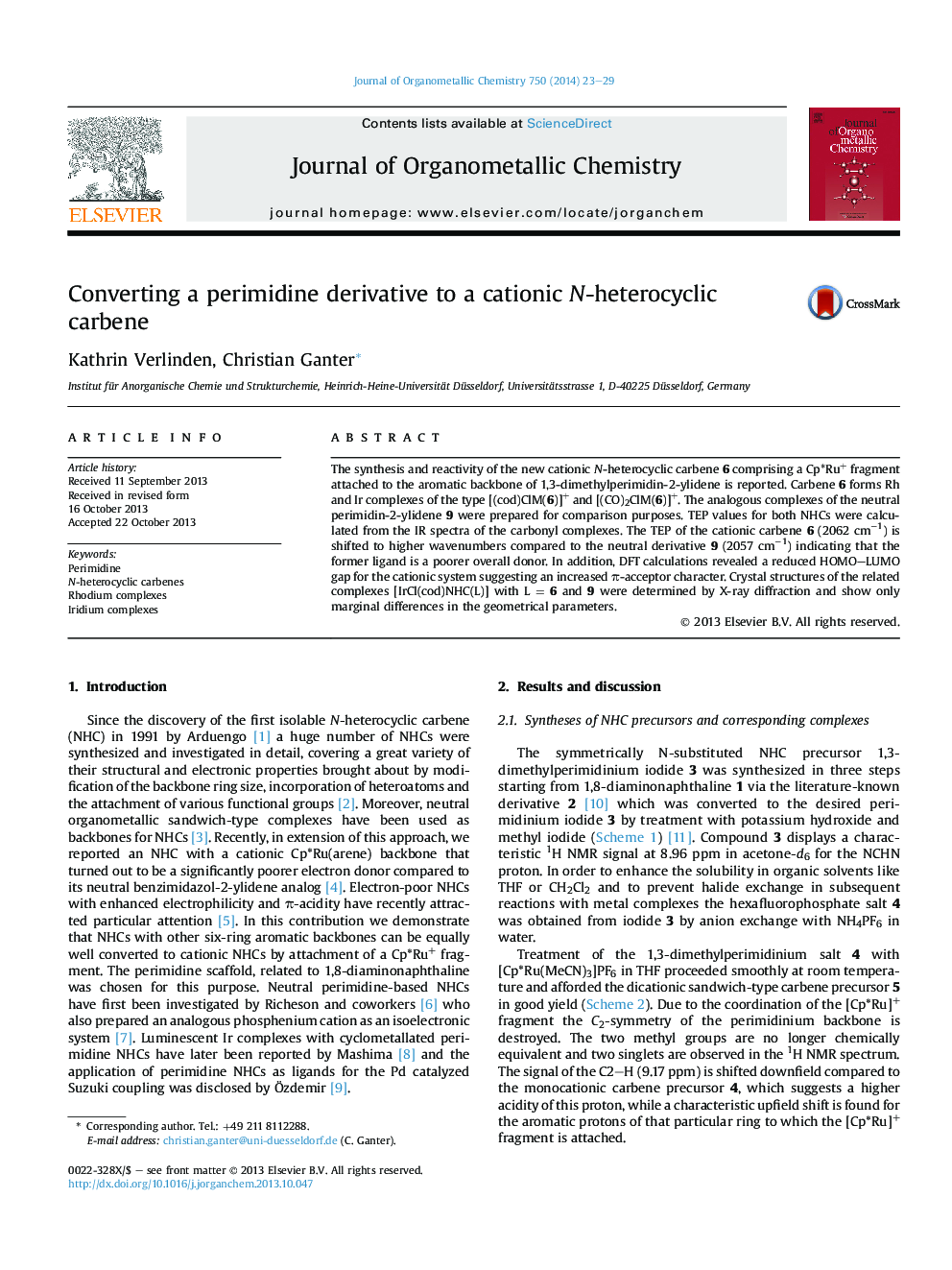| Article ID | Journal | Published Year | Pages | File Type |
|---|---|---|---|---|
| 1322541 | Journal of Organometallic Chemistry | 2014 | 7 Pages |
•A cationic N-heterocyclic carbene with a sandwich-type backbone is described.•The reactivity of the cationic carbene is investigated.•Experimental and DFT work suggest the cationic carbene is a reasonable π-acceptor.
The synthesis and reactivity of the new cationic N-heterocyclic carbene 6 comprising a Cp*Ru+ fragment attached to the aromatic backbone of 1,3-dimethylperimidin-2-ylidene is reported. Carbene 6 forms Rh and Ir complexes of the type [(cod)ClM(6)]+ and [(CO)2ClM(6)]+. The analogous complexes of the neutral perimidin-2-ylidene 9 were prepared for comparison purposes. TEP values for both NHCs were calculated from the IR spectra of the carbonyl complexes. The TEP of the cationic carbene 6 (2062 cm−1) is shifted to higher wavenumbers compared to the neutral derivative 9 (2057 cm−1) indicating that the former ligand is a poorer overall donor. In addition, DFT calculations revealed a reduced HOMO–LUMO gap for the cationic system suggesting an increased π-acceptor character. Crystal structures of the related complexes [IrCl(cod)NHC(L)] with L = 6 and 9 were determined by X-ray diffraction and show only marginal differences in the geometrical parameters.
Graphical abstractThe cationic N-heterocyclic carbene 1 with an organometallic sandwich-type backbone was prepared and its ligand properties were compared to its neutral analog 2. Experimental and DFT data suggest that 1 is a reasonable π-acceptor in metal complexes. X-ray structures of (COD)IrCl complexes of both ligands were determined.Figure optionsDownload full-size imageDownload as PowerPoint slide
